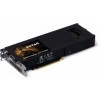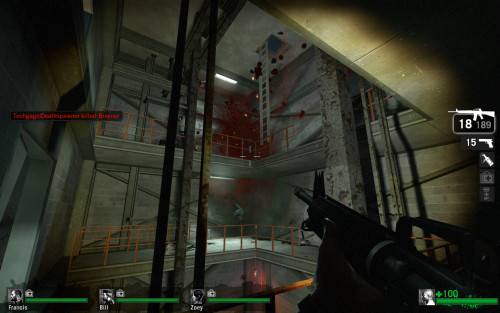- Qualcomm Launches Snapdragon 4 Gen 2 Mobile Platform
- AMD Launches Ryzen PRO 7000 Series Mobile & Desktop Platform
- Intel Launches Sleek Single-Slot Arc Pro A60 Workstation Graphics Card
- NVIDIA Announces Latest Ada Lovelace Additions: GeForce RTX 4060 Ti & RTX 4060
- Maxon Redshift With AMD Radeon GPU Rendering Support Now Available
Zotac GeForce GTX 285 & GTX 295

When NVIDIA released their GTX 285 and 295 earlier this month, they successfully reclaimed the performance crown for both single and dual-GPU graphics cards. We’re finally putting both of these models through our grueling testing, in both single card and SLI configurations, to see just how much value can be had when compared to previous offerings.
Page 6 – Left 4 Dead
Not too many game publishers can brag about having such a great track record like Valve can. None of their major game releases have ever been released to anything but praise, which goes to show that not rushing to release a game to please investors can make a huge difference. Take Half-Life 2, Team Fortress 2 and Portal, for example.
Left 4 Dead is one game I didn’t take seriously up until its launch. After playing it though, my opinions changed drastically, and even as I type this, I feel like saving the document and going to play. But, I’m also scared of Zombies, so continue writing I shall. Like Dead Space, this game is a survival shooter, but unlike that game, this title focuses completely on co-op. For the most part, the game is dulled in single player, but team up with three of your friends and let the laughs and excitement begin.
The portion of the level we use for testing is contained within the No Mercy campaign. The ultimate goal in the entire campaign is to make it to the top of a hospital in order to be picked up and brought off to safety. Our run through takes place in the final part of the the campaign, which leads up towards the roof tops. If one thing can be said about this title, it’s that causing a Boomer to explode (as seen in the above screenshot) proves to be one of the most satisfying things to do in any game I’ve played in a while.



Like most of Valve’s titles, a massive computer isn’t required to run Left 4 Dead at top settings. Take a look at our 2560×1600 result, for example. Even with our modest GTX 260/216 card, we were able to top the game out, and still enjoy well over 60 FPS on average. This isn’t the greatest thing for graphics card vendors, but for once, the consumers come out the big winners.
|
Graphics Card
|
Best Playable
|
Avg. FPS
|
|
NVIDIA GTX 295 1792MB x 2
|
2560×1600, Max Detail, 8xMSAA
|
117.701 FPS
|
|
Palit HD 4870 X2 2GB
|
2560×1600, Max Detail, 8xMSAA
|
117.039 FPS
|
|
NVIDIA GTX 285 1GB x 2
|
2560×1600, Max Detail, 8xMSAA
|
109.491 FPS
|
|
Zotac GTX 295 1792MB
|
2560×1600, Max Detail, 8xMSAA
|
102.422 FPS
|
|
Zotac GTX 285 1GB AMP!
|
2560×1600, Max Detail, 8xMSAA
|
73.075 FPS
|
|
NVIDIA GTX 285 1GB
|
2560×1600, Max Detail, 8xMSAA
|
72.072 FPS
|
|
Palit GTX 280 1GB
|
2560×1600, Max Detail, 8xMSAA
|
66.775 FPS
|
|
Diamond HD 4870 1GB
|
2560×1600, Max Detail, 8xMSAA
|
66.294 FPS
|
|
XFX GTX 260/216 896MB
|
2560×1600, Max Detail, 8xMSAA
|
56.608 FPS
|
As the table above shows off, bumping our Anti-Aliasing setting to 8xAA made little difference. Even with that applied, all nine GPU configurations we ran the game through could be played without issue. Although the game offers modes up to 16xAA, I found zero difference in frame rates (on both ATI and NVIDIA) cards, than when compared to 8xAA. It seems anything above that (aside from NVIDIA’s CSAA, possibly) is moot.
Support our efforts! With ad revenue at an all-time low for written websites, we're relying more than ever on reader support to help us continue putting so much effort into this type of content. You can support us by becoming a Patron, or by using our Amazon shopping affiliate links listed through our articles. Thanks for your support!






